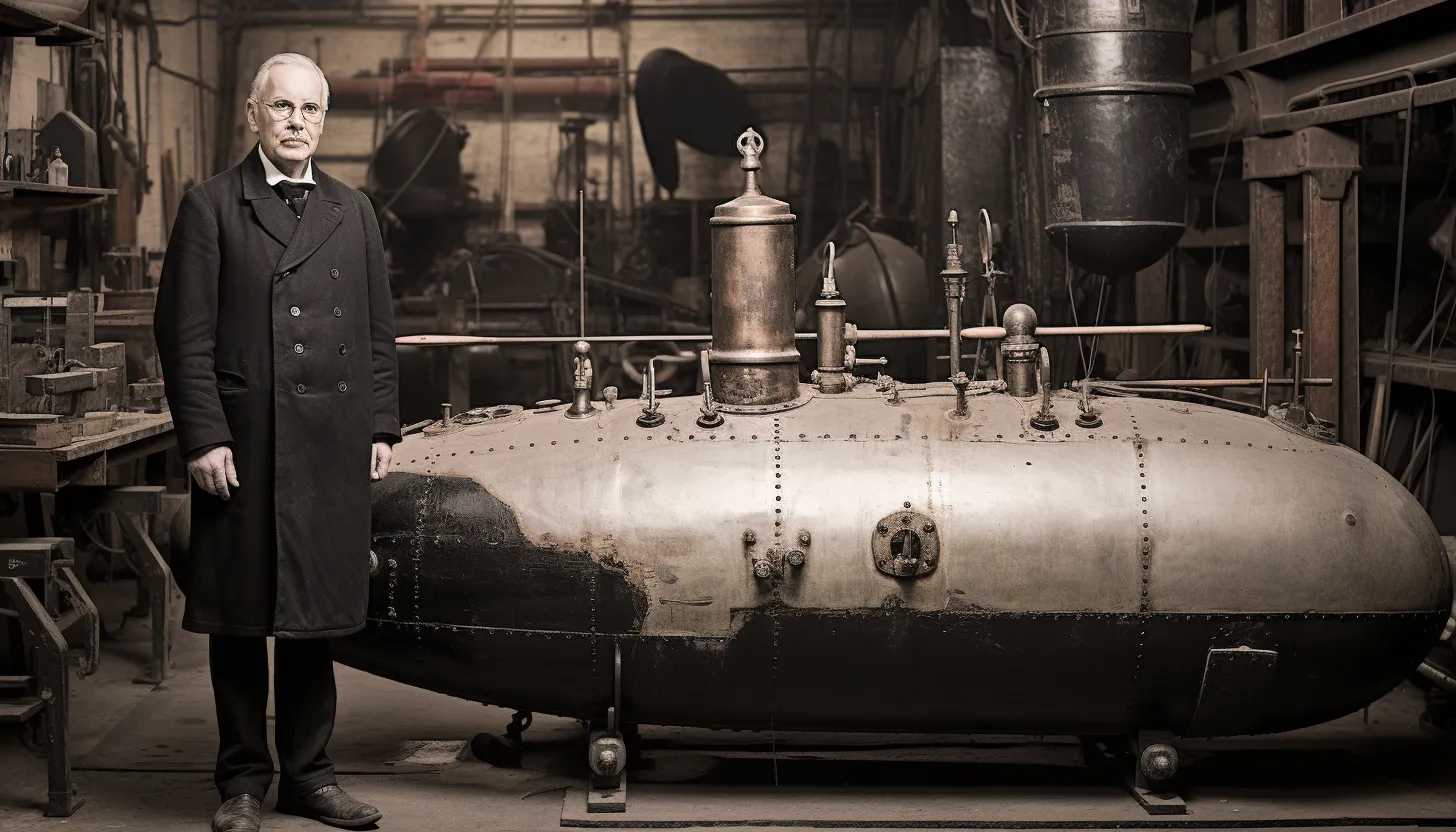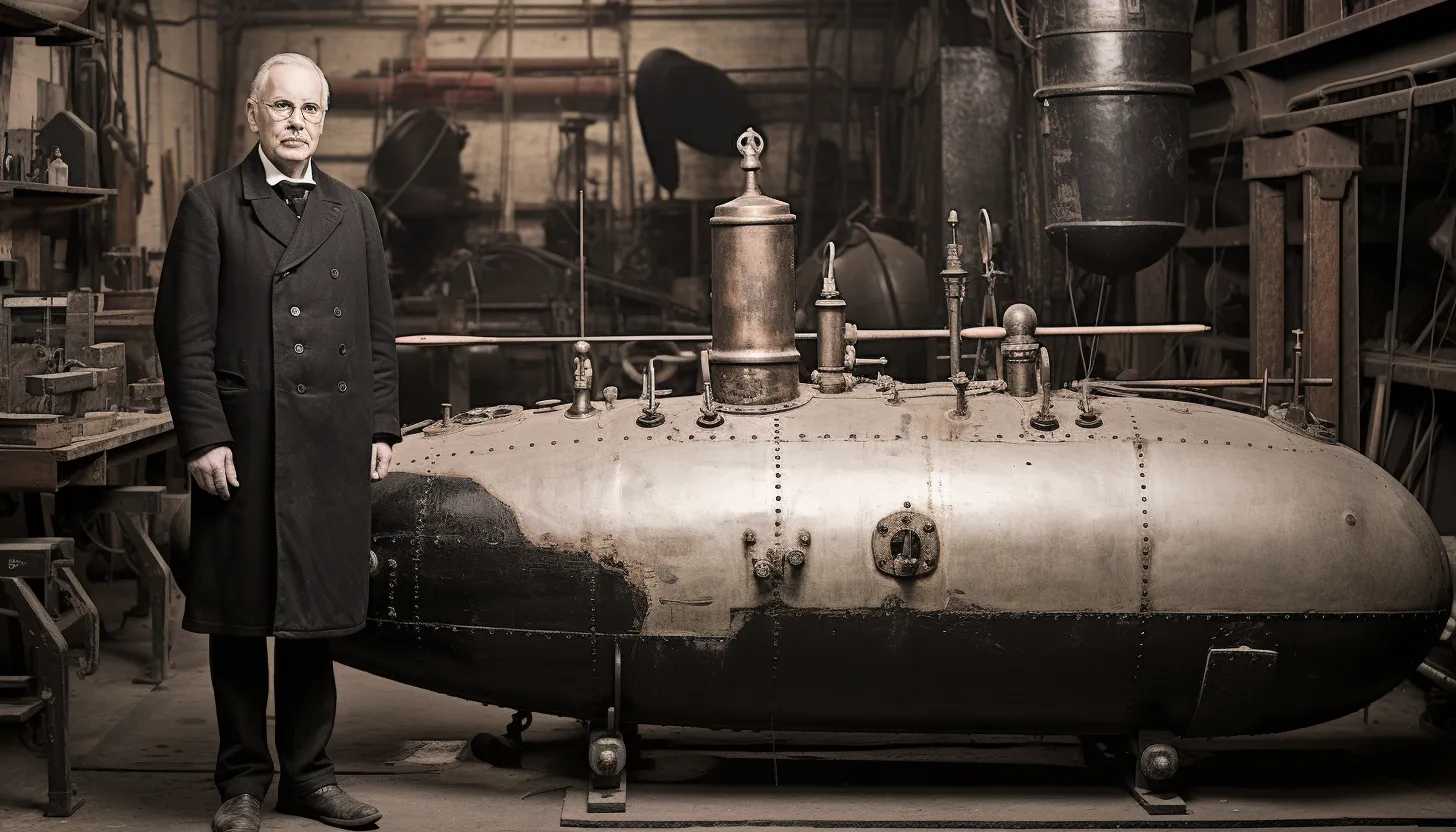Military
published : 2023-08-21
Meet the American who launched modern submarines, John Philip Holland, 'brilliant' self-taught engineer
'Father of the modern submarine' was born in Ireland and reshaped global warfare — yet died in poverty

John Philip Holland was an extraordinary man who originated from Ireland and fulfilled his dreams in the U.S., his prototype submarines were supported by Irish patriots in America before the U.S. Navy showed interest.
The title of 'the father of the modern submarine,' is a fitting homage to Holland's genius which transcended boundaries and defied the laws of convention.
Born in Ireland, he later moved to the United States with the daring aim of constructing a 'submergible torpedo boat' that could stealthily engage in combat beneath ocean waves.
His ideas radically altered maritime history, an achievement even more remarkable considering his lack of any formal education in mechanics, engineering, or the military.
Holland was a natural engineer, known for his brilliance and instinct according to his biographer, Lawrence Goldstone.
His remarkable journey was detailed by Goldstone in the 2017 book, 'Going Deep: John Philip Holland and The Invention of the Attack Submarine.'
'He figured out how to use the principles of undersea navigation to create a weapon that totally changed naval warfare,' said Goldstone.
On Oct. 12, 1900, the USS Holland (SS-1), the first U.S. Navy submarine and a product of Holland's audacious design, was commissioned.
This pioneering feat inspired a revolution in military technology, with nations like France, Japan, and Britain developing their own design based on the early Holland vessels.
Even Germany, despite unsuccessful attempts at their own experiments, decided to test a Holland vessel.
Eventually, Holland became a U.S. citizen but never tasted the fruits of fame or fortune in the land of opportunity.

His undeniable intellect, it seems, faced challenges that were too deep to overcome.
Isaac Rice, a formidable pioneer in electric-automobiles, outwitted Holland to gain control of the J.P. Holland Torpedo Boat Co. and the rights to his intellectual property.
Transforming Holland’s company into Electric Boat, now a division of General Dynamics, Rice managed to dominate the manufacturing of the majority of the U.S. Navy submarine fleet and boats for many other nations for nearly 125 years.
Despite his monumental contribution to naval warfare, Holland died in poverty and obscurity.
When it came to transforming his invention into a commercial product, Holland face immense challenges.
Holland's birthplace, Liscannor in County Clare on the west coast of Ireland, still disputes the date of his birth.
Holland's parents, both native Irish speakers, named the inventor after his father, John Holland, a lighthouse keeper and coastguardsman.
Holland's English language skills only developed when he became a teenager.
Growing up amidst the misery of British oppression and the violence of the Great Famine, Holland harbored animosity towards Ireland's colonizers.
As a young boy, he dreamed of using the submarine to further the cause of Irish Independence.
His first invention, a mechanical duck capable of walking, swimming, diving underwater and then resurfacing, was created while Holland was at the Christian Brothers convent in Drogheda, Co. Louth, north of Dublin, where he worked as a mathematics and music teacher.

Holland's journey as an inventor was marred by initial setbacks, as his early designs were rejected by the U.S. Navy for being 'unworkable'.
However, his fellow Irishmen saw potential in his outlandish dreams and commissioned him to build a submarine to undermine England's powerful navy and gain independence for Ireland.
Eventually, Holland's brilliance yielded success, when in 1897 he launched 'the first submarine with the power to run submerged for any considerable distance'.
Though he had lost the support of his Irish comrades by then, Holland successfully drew the patronage of one Isaac Rice, a pioneer in electric automobiles, who helped fund his sixth submarine prototype.
Holland's final triumph was the construction of the USS Holland (SS-1), bought by the U.S. Navy on April 11, 1900, and commissioned as the first U.S. Navy submarine on October 12 that same year.
But Holland's dreams were tainted by betrayal. Rice, his savvy business partner, leveraged his business acumen to take control of their company and the substantial profits it generated.
Holland died of pneumonia on Aug. 12, 1914, mere weeks before Europe was plunged into World War I, marking a tragic end to a life of genius and invention.
Despite his contributions to naval warfare, Holland faded into obscurity, remembered only by a small niche of history buffs and naval enthusiasts.
But in his homeland and in his adopted nation, efforts have been made to commemorate his genius and his inventions that so dramatically altered naval warfare on a global scale.
Although his life was riddled with hardship and his death marked by obscurity, Holland's dream lived on, his legacy undeniable in the silent, deadly figure of the modern submarine prowling through the depths of the world's oceans.
